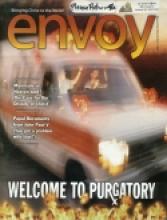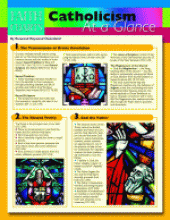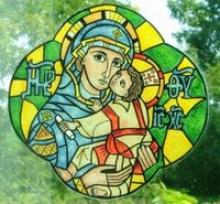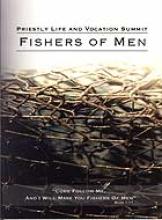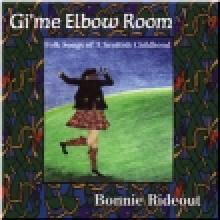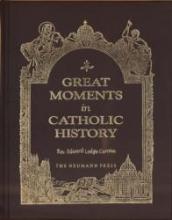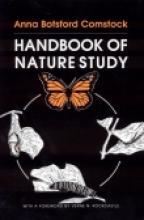General Resource
Envoy Magazine
1-800-55-ENVOY
Website: http://www.envoymagazine.com
A beautiful full-color glossy magazine on Catholic apologetics. The magazine is trendy in format (meant to appeal to teens and "Generation Xers") but orthodox in content. Although we don't subscribe to this magazine, I've seen a few issues and have been very impressed. Some articles I read included sample scenarios of how to explain Catholic teachings in particular situations. I thought this was a very helpful way of preparing people for apologetics. This magazine also includes Scott Hahn's newsletter Scripture Matters.
Update by webmaster, March 2024: Envoy Magazine has been out of production for several years now. Some of Pat's articles from the magazine can be found at his blog: https://patrickmadrid.com/articles/
For a Catholic apologetics magazine that is still available, check out our review of Catholic Answers Magazine.
Faith Charts: Catholicism at a Glance
5. You shall not kill (CCC 2318-30) - Commands us to respect the lives of others and our own, honoring our bodies as temples of the Holy Spirit. - Prohibits murder, abortion, suicide, euthanasia, sterilization, mutilations and non-therapeutic amputations, kidnapping, gluttony, drug use, drunkenness, seeking revenge, anger, hatred, and illegitimate war.Nicely illustrated with images of stained glass windows.
Fenestrae Fidei
Fishers of Men
DVD
For the Beauty of the Earth
Like many Catholic Home schooling families, providing a Catholic education was number one on the list of reasons my husband and I wanted to home school. In addition, we wanted a rigorous education, and one that emphasized the beauties of truth and love. Translating these goals into a curriculum is an on-going challenge. Sometimes the books that do a good job presenting a particular subject do it without the light of the Faith. Other times, books that are "solidly Catholic" are also unattractive and uninspiring. We have had to compromise in a lot of areas.
Two that we have not had to compromise in are science and history, and this is largely due to the Catholic school supplements produced by James Leek. These two are among the most excellent resources I have come across in home schooling. They include interesting material for study and careful explanation of an approach to education that is beautifully in keeping with our holy faith. In themselves, these explanations are worth reading and incorporating into your teaching.
In science, for example, Mr. Leek explains the integrating principles for a Catholic science education. Ultimately, our aim is to better know the Creator of everything. Science study also has remote ends: that we develop a respect for God's creation, and learn to contemplate and reflect on it, and that we exercise our minds to improve life and serve our fellow men. At the same time, science has its proximate and immediate ends: to learn how the world works and to take in sensory data of the physical reality around us.
These principles are very well realized in Leek's science supplement. For the Beauty of the Earth includes a textbook with literary selections organized around the common subject matter of science. The lyrics of the beautiful hymn from which this program draws its title provide the organizing system. In addition to "the beauty of the earth" (weather, metals, energy), we have chapters on "the glory of the skies" (stars, the sun), "hill and vale and tree and flower" "the mystic harmony linking sense to sound and sight" (insects, spiders, mammals), and "the joy of human love" (the senses, emotions, the will.)
The corresponding teacher's guide builds on the readings with questions and activities that take the student from considering the text, to observing the natural world, to admiring God's handiwork, and finally, to the religious analogy. An example to illustrate this progression would be the reading of "Phaeton and Apollo." After the selection is read, the student is asked a series of questions on the text: Who was Phaeton? Describe the court of the sun, etc. Next, students are asked to make some observations about the sun: Where does it rise and set? Does it actually move? What makes it appear to move? Then they are asked to consider the sun's role in life on our planet, and finally, to how the sun is like God, how its marvelous working points to the existence of God.
Questions and activities are broken into grade levels so that this program can be used throughout the elementary years. My first reaction when I looked at For the Beauty of the Earth was to think that this was a liberal arts soft-pedaling of the hard subject of science. But after I carefully read the author's introduction, I decided it could be so much more than that, and it more than met those expectations. We used it alternately with our regular science text, allowing the literary selections and projects to set the tone for our textbook's coverage. Along with enjoying some good stories, memorizing poems and scriptures, doing some fun projects (like building a humane mousetrap), I found that the sense of wonder created through the program carried into the rest of our textbook consideration of each topic. The course is cross-referenced with many of the most popular school science text series from the time it was published (early 1980s).
Gi'Me Elbow Room, Folk Songs of A Scottish Childhood
Three time national fiddle champion Bonnie Rideout put together an enchanting collection of songs and poems for children on this mp3 album, originally released on CD. She has set traditional poems and nursery rhymes (such as "Bobbie Shafto" and "Wee Willie Winkie") to traditional Scottish tunes and includes familiar songs such as "My Bonnie Lies Over the Ocean" and "Oh Dear, What Can the Matter Be."
The best part of the album are the pieces of original and traditional music set to the poems of Robert Louis Stevenson and an absolutely ingenious adaption of the Yeats poem, "The Fiddler from Dooney."
I cannot praise this album enough, it is extremely well done. As part of our homeschooling we memorize poetry so my children were in awe of a Robert Louis Stevenson "song." The music is irresistible and we are all singing the songs throughout the day. The instruments used in creating the music on various pieces include the following: fiddle, viola, harp, recorder, bodhran, piano, guitar, tin whistle, ocarina, dulcimer, and if you can believe it, coffee can, tinkertoy can and kazoo.
If you and your children like traditional Irish and Scottish music, this mp3 (or CD) album would be a great addition to your collection. It can be ordered from any music store or directly from the music company.
Great Moments in Catholic History
This book would be helpful in enriching the study of history with a Catholic perspective. One cannot begin to appreciate history without first understanding the impact of Christ and His church on historical events; The easy-to-read format of this book makes that understanding almost effortless.
The author recommends using this book as a supplement for seventh and eighth graders. However my younger students have benefited from using Great Moments in Catholic History as a read-aloud book. Not only have the children enjoyed learning from our read aloud time, but so have I.
Like many of Neumann Press' books, Great Moments in Catholic History is beautifully bound. The black hardcover is embossed with gold and it is filled with ivory 60-pound paper.
Handbook of Nature Study
This is a very informative handbook on a large portion of nature, originally written for elementary school teachers. It covers wildlife, insects, farm animals, birds, fish, trees, flowers, weeds, vegetables, rocks, minerals, soil, climate, weather, magnets, the sun, moon, planets of our solar system and much more. According to the 1986 foreword, most of the living things described are common in the northeastern states of the U.S. but it covers a lot of material that would be helpful in other parts of the country as well. I've hardly begun to use this resource, but it looks like an excellent reference for all of those questions children want to know about the world around them. It can also be used as a teaching tool and studied more systematically as there are simple lessons designed to be used with children included with each subject. As the lessons are designed to work with real observation of the plants, they are particularly appropriate for a home school. The book is profusely illustrated with black and white photos. I would guess that there's an average of two photos per page. The language is a little archaic and some of the words would be a little difficult for younger children.
Copyrights 1911/1939
Heritage Memo Game
A memory game showing 36 pictures of outstanding sites worldwide.
While looking for something fun to add to this year's curriculum purchases, I discovered this memory game in the Montessori Services catalog. I can't tell you how much fun we've had with it. The whole family down to the 2 1/2 year old have enjoyed rousing games of memory while learning about important historical, cultural and religious sites from around the world. The cards are approximately 2 inches square with full color pictures of famous sites. There are a high percentage of Catholic sites:
Cathedral of Aachen, Germany
Palace of the Pope, Avignon France
Chartres Cathedral, France
Cathedral of Cordoba, Spain
Cathedral and Monastery "Victorious Holy Maria" in Portugal
Cathedral of Cefalu in Sicily
Church of Sagrada Familia, Spain
Reims Cathedral, France
Santiago de Compostela Cathedral, Spain
Other sites are:
Dome of the Rock, Jerusalem
Stonehenge, Great Britain
St. Basil's Cathedral, Moscow
Cathedral of Canterbury, Great Britain
Nemrut dagi, Turkey
Easter Island, South America
Temple of Katmandu, Nepal
Schwe-Dagon-Pagode, Birma
Stupa of Borobudur, Indonesia
Todaidshi-Temple, Japan
Amun-Temple, Karnak Egypt
Uxmal, Mexico
Madrese Schir-Dar, Russia
Tula, Mexico
Taj Mahal, India
Temple of Abu Simbel, Egypt
Hagia-Sofia, Turkey
Maccu Picchu, Peru
Acropolis, Athens
Sphinx and Great Pyramid
Wailing Wall, Jerusalem
Menhirs of Carnac, France
Temple of Hera, Italy
Leaning Tower of Pisa, Italy
Athos-Monasteries, Greece
Malawiya Minaret, Iraq
Schah-Mosque, Iran
Included with the game is a fold-out sheet with black and white images of each of the sites along with a brief description and location.
72 cards, Made in Austria

